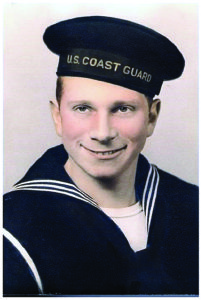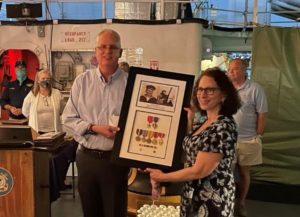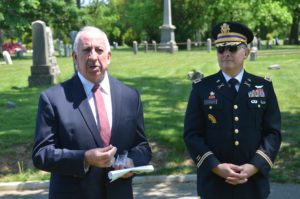By Ben Kane, Programs Assistant
At the 2021 JWV National Convention’s first business session, attendees heard from Marina Jackman, the President and CEO of the Global War on Terrorism Memorial Foundation. The goal of the foundation is to “honor the service and sacrifice of all who served in the Global War on Terrorism.” One of the ways this mission will be carried out is through the construction of the Global War on Terrorism memorial. Jackman referred to the proposed memorial as a “functional piece of art adorning the National Mall,” and said, “the memorial will be the first for men and women who have died fighting, continue to fight, and who are just joining the fight against terrorism.” The memorial will be a testament to the strength of all who fought and continue to fight in the war that has presently lasted for decades. The memorial will be a permanent “reminder of collective strength and willingness to stand in the face of terrorism and the threats to our very way of life, and a place of healing, reflection, empowerment, unity, and knowledge.”
Jackman pointed out that generational responsibility is a large component of Jewish tradition, and the memorial should be appreciated and approved by the Jewish military community, as it is intended to aid with educating future generations about the struggles and sacrifices of the presently ongoing international conflict. Congressman Mike Gallagher, a public supporter of the memorial, was quoted by Jackman as saying, “if we’re going to continue passing the torch of democracy from one generation to the next, then we need to build this memorial so that future generations never forget their duty to do the same.”
It’s rare for monuments to conflicts to be constructed around the same time as the conflict itself. Jackson lamented this, saying most monuments are built “too late to have the kind of impact that they could have, and certainly far too late for most of those who fought to share those experiences with their families.” But this memorial, due to it being pursued speedily, would avoid the educational hinderances that come with building monuments too late.
While plans are currently in motion, construction of any kind in D.C. takes a long time. The 24-step process is arduous, and the memorial is, at the time of writing, on steps 9 through 12 which are the site selection steps. Congress closed the desired spot for the memorial in 2003. The foundation is now asking Congress to pass legislation to make an exception for this memorial. JWV has signed on to letters supporting this effort. Because of the difficulties that come with construction of this kind, the project is not expected to be completed for another four or five years. The Global War on Terrorism Foundation’s website and social media pages are excellent resources to use to be kept up to date on the development of the memorial, or to donate to the foundation.
Volume 75. Number 3. 2021




